What makes the best cameras for action and sports photography? These shooters need to be able to capture fast, fleeting moments in pin-sharp detail. Sports are about unique moments, and so a good sports camera needs to be able to nail a shot with speed and accuracy. This means we’re looking for something more specific than the best camera for photography.
We want fast burst rates, with plenty of frames per second (fps) to ensure the moment isn’t missed. A good sports camera should also have a fast, accurate autofocus system that can keep up with tricky moving subjects, even as they flit in and out of frame. Good high-ISO performance is a plus too, as having more sensitivity on your sensor will allow you to use shorter shutter speeds, improving your chances of freezing the action.
This guide represents an up-to-date selection of the best sports cameras our team has ever tested, including budget-friendly models as well as high-end professional cameras. Check out our guide to how to shoot action and sports photography for more tips, or read on as we count off the best cameras for action and sports photography that you can buy right now…
Best camera for action and sports photography: the quick list
Looking for the best deal on cameras for action and sports? Not only will you find the best action and sports cameras but also some of the best cheap camera deals, as our ‘Buy now’ buttons automatically take you to the best prices from trusted retailers. There is also a list of other retailers below each camera so you can find the right deal for you.
- Best beginner sports camera: Fujifilm X-T30 II – Buy now
- Best budget sports camera: Sony A6000 – Buy now
- Best travel sports camera: Panasonic Lumix G9 II – Buy now
- Best superzoom sports camera: Nikon Coolpix P950 – Buy now
- Best enthusiast sports DSLR: Canon EOS 90D – Buy now
- Best APS-C mirrorless camera for sports: Fujifilm X-H2s – Buy now
- Best sports camera for burst shooting: Nikon Z8 – Buy now
- Best sports camera for pros: Sony A9 III – Buy now
- Best Micro Four Thirds sports camera: OM System OM-1 Mark II – Buy now
- Best sports DSLR: Canon EOS-1D X Mark III – Buy now
- Best all-rounder sports camera: Sony A1 – Buy now
Why you can trust Amateur Photographer
We spend many hours testing every product we recommend, in detail, in a variety of situations and shooting scenarios, and only use experts for our reviews, so you can be sure that you’re getting the best products. Find out more about our expert writers.
Read on to find out what makes each of these cameras an exceptional choice for sports photography…
Best for beginners
Best beginner sports camera: Fujifilm X-T30 II

Amateur Photographer verdict
A starter camera for the Fujifilm X system, the X-T30 II ticks a lot of boxes for sports photographers, with intuitive handling and a generous burst speed.- Excellent out-of-camera JPEGs
- Satisfying physical handling
- Superb lens range
- Great value for money
- Easy to knock exposure comp. dial
- No in-body stabilisation
At a glance:
- Mirrorless camera
- 26.1MP X-Trans CMOS IV APS-C sensor
- Up to 30 fps with electronic shutter (cropped), 20 fps uncropped
- ISO 80 – 51,200 (extended)
- 4K 30p video recording
- $899 / £799 body-only
An update to one of Fujifilm’s most popular cameras, both critically and commercially, the Fujifilm X-T30 II is an outstanding APS-C mirrorless shooter that makes for an exceptional starter sports camera. It can reach a maximum burst speed of 30fps in a cropped shooting mode with its electronic shutter, and the generous ISO range of ISO80 – ISO51,200 gives you a good deal of flexibility.
As we noted in our review, Fujifilm has priced this camera competitively considering how well-specced it is – the RRP is $899 / £769 body-only, and for that, you get the same sensor as featured in the previous-generation flagship Fujifilm X-T4. Fujifilm X cameras are great fun to use, with satisfying handling and dial-based controls, and you also get another serious advantage – the X-mount lens range, which is a fantastic series of pin-sharp optics, perfect for freezing action.
Best for: sports-shooting novices who want to learn the ropes.
Read our review of the Fujifilm X-T30.
Best budget option
Best budget sports camera: Sony A6000
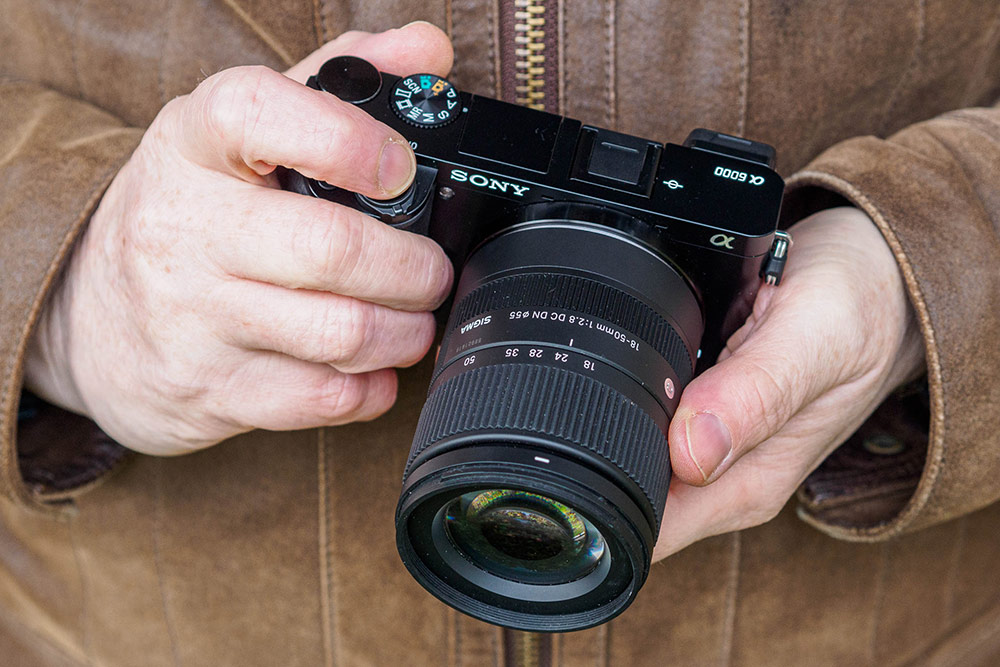
Amateur Photographer verdict
It may be about a decade old, but the Sony A6000 is still a perfectly decent sports shooter, with reliable focusing and fast burst. At this price, it’s a bargain.- Significantly discounted from launch
- Autofocus still impresses
- Lightweight and portable
- No stabilisation
- No 4K
At a glance:
- Mirrorless camera
- 24.3MP full-frame Exmor APS-C HD CMOS sensor
- 11 fps shooting
- ISO 100 – 25,600
- Full HD 60p video recording
- Price new: $600/£650
- Second-hand: from around $410 / £300 body-only
Though it’s an older camera, the Sony A6000 is still a solid choice for prospective sports and action shooters. You can generally pick one up for less than £500, often with a starter kit lens, and this makes it one of the savviest buys on the market. Lightweight and speedy, this E-mount mirrorless camera performed well in our tests across all manner of shooting conditions.
Sony first deployed here an autofocus system that would be refined in subsequent APS-C A6XXX cameras, but it got a lot right the first time, and the A6000 is pretty dependable even with moving subjects. Having 11fps shooting is handy too, and means you’re unlikely to miss the moment – or at least if you do, it won’t be the camera’s fault! There’s also a good range of E-Mount lenses to choose from.
Best for: tight-budget shooters who want mirrorless flexibility.
Read our full review of the Sony A6000.
Best light-weight
Best travel sports camera: Panasonic Lumix G9 II
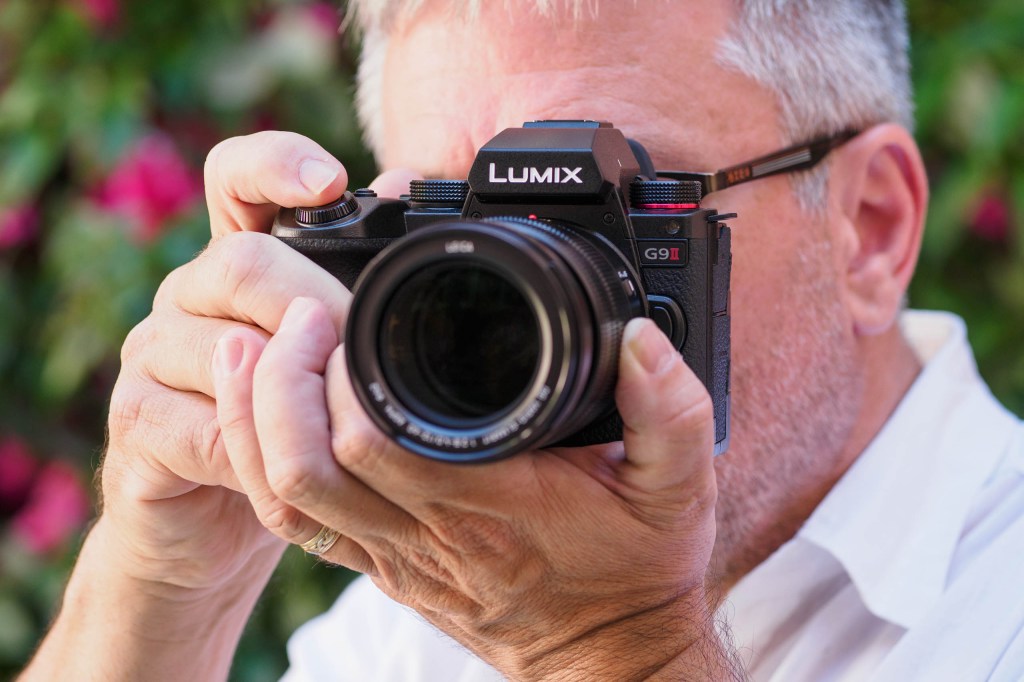
Amateur Photographer verdict
Delivering high speeds and excellent autofocus, the Lumix G9 II is a lightweight monster for sports photography – with the lenses to match.- Phase-detect AF with Subject Recognition
- Improved image quality over older MFT cameras
- Very good control layout
- Some viewfinder lag at fastest speeds
- Dials underused in default control scheme
At a glance:
- Mirrorless camera
- 25.2MP Micro Four Thirds sensor
- 75 fps shooting
- ISO 100 – 25,600 (extended)
- 5.7K 60p video recording
- $1,698 / £1,689 body-only
With its slim dimensions, clever ergonomics and a huge range of lightweight lenses, the Panasonic Lumix G9 II is an ideal camera for the travelling sports photographer. A long-awaited update to the original (much-admired) Lumix G9, this camera brings to the Lumix Micro Four Thirds system something that users had been crying out for – phase-detection autofocus! No more creaky Depth from Defocus contrast-based system – the Lumix G system finally arrives in the 21st century.
This system pairs with a capable AI-powered Subject Recognition function, making the Lumix G9 II an exceptionally capable beast for shooting sports. Its burst modes are no slouch – we put the camera to the test on a motorbike racing track, and captured 170 frames at 14fps. While it works well, one thing to be aware of is that you don’t get Live View at these speeds, with the camera instead playing images back through the viewfinder, which does incur some slight lag.
However, thanks to the Micro Four Thirds system’s ability to field lightweight telephoto lenses without compromising on optical quality, the Lumix G9 II is overall pretty unbeatable as a travel-friendly sports camera. It’s highly capable of producing brilliant images of fast action – what more can you ask for?
Best for: adventurous, globe-trotting sports photographers.
Read our review of the Panasonic Lumix G9 II.
Best superzoom compact
Best superzoom sports camera: Nikon Coolpix P950
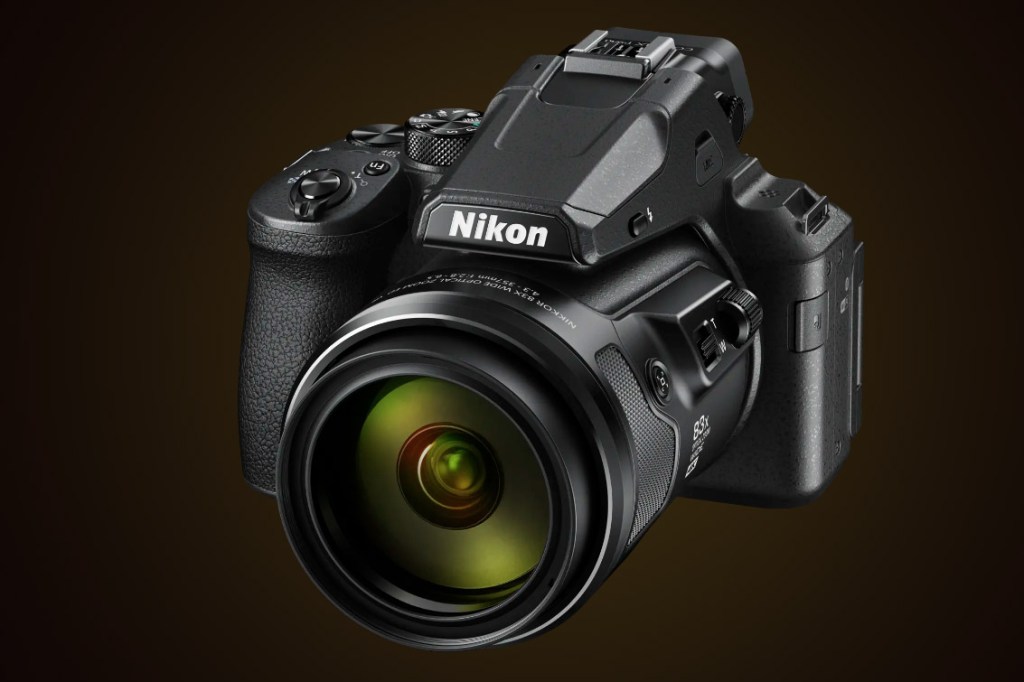
Amateur Photographer verdict
Its image quality isn’t up to the standards of the best mirrorless cameras, but the Nikon Coolpix P950 offers an unparalleled zoom range for the money, which is perfect for sports shooting.- Huge 83x zoom range
- Impressive portability
- Can shoot in RAW format
- Small sensor impacts image quality
- Pricey for a bridge camera
At a glance:
- Compact (bridge) camera
- 16MP 1/2.3-in CMOS sensor, 24 – 2000mm equivalent lens
- 15 fps shooting
- ISO 100 – 6400
- 4K 30p video recording
- $797 / £849
A superzoom bridge camera gives you more zooming power for your buck than pretty much anything else on the market. The Nikon Coolpix P950 boasts a whopping upper optical zoom range of 200mm equivalent, and using the digital zoom technology this can even be pushed to 4000mm, close enough to make out the individual follicles on a football player’s head, if that’s something you want to do.
An equivalent setup in a mirrorless or DSLR system would likely run you into a five-figure price tag, so the Nikon Coolpix P950 is certainly offering value for money. You just need to be aware of its limitations; namely, the 1/2.3-inch sensor size, which has a notable impact on image quality, especially in low light. If this camera is out of your budget then it’s worth looking at its predecessor, the Coolpix P900, which can generally be picked up second-hand for under 500. It’s missing a few features like an accessory hotshoe, and has a smaller viewfinder, but it’s still got that colossal zoom range.
Best for: budget photographers who want to keep things simple.
Read our full review of the Nikon Coolpix P950.
Best for enthusiasts
Best enthusiast sports DSLR: Canon EOS 90D

Amateur Photographer verdict
You can’t go wrong with a DSLR, and the Canon EOS 90D provides an expertly pitched balance between power, portability and price. The large battery is a big plus for sports shooting.- Excellent resolving power
- Beautiful optical viewfinder
- Superb ergonomics
- 1300-shot battery
- Only one card slot
- Cheap lenses don’t do sensor justice
- Ageing autofocus system
At a glance:
- DSLR
- 32.5MP APS-C CMOS sensor
- 10 fps continuous shooting
- ISO 100 – 51,200 (extended)
- 4K 30p video recording
- $999 / £770 body only, used
There’s a lot to be said for a good old DSLR in the hand. With its chunky handgrip and optical viewfinder, the Canon EOS 90D provides a slightly old-fashioned but sublime shooting experience – heavier than its mirrorless contemporaries, but eminently satisfying to use. It’s the most recent enthusiast DSLR Canon has released, and quite possibly the last one we’ll ever see, and if that’s the case, it’s a hell of a note to go out on.
When we reviewed the Canon EOS 90D, we found its revamped 32.5MP sensor produces exceptional images, with enough detail that you can crop in if you didn’t get as close as you’d like. The lenses that tend to get bundled with this camera don’t really do it justice, so it’s worth saving to upgrade to another Canon EF-mount lens if you do go for it. While it’s not got a perfect feature-set for sports – lacking a second card slot, for instance – the EOS 90D has a lot going for it, such as the large LP-E6N battery, with which you can keep shooting all day.
Best for: enthusiasts who prefer an optical viewfinder.
Best APS-C mirrorless
Best APS-C mirrorless camera for sports: Fujifilm X-H2s

Amateur Photographer verdict
Hugely impressive, this high-performance mirrorless camera can stand toe-to-toe with full-frame contemporaries, boasting blistering speeds and fast focusing.- Super-fast shooting and responsive operation
- Great image quality in JPEG and RAW
- Effective subject-recognition autofocus
- Weather-sealed build
- Occasionally unresponsive touchscreen
- Expensive for APS-C
At a glance:
- 26.2MP APS-C stacked BSI CMOS sensor
- ISO 80-51,200 (extended)
- 40 frames per second shooting
- 6K 30p / 4K 120p video recording
- 5-axis in-body stabilisation
- $2,499 / £2,499 body-only
The Fujifilm X-H2s uses a 26.2MP APS-C stacked BSI CMOS sensor which lets the camera shoot at an impressive 40fps, and on top of this the camera features an effective subject-recognition autofocus system which can detect animals, birds, cars, motorbikes, airplanes and trains! If you’re into motorsports, then this camera is designed for you.
The camera has a wide ISO range, meaning you can shoot in lower light conditions without having to worry too much about using higher ISO speeds when needed, meaning you can keep shutter speeds nice and fast. With a wide-range of X-mount lenses available, this is easily one of the best Fujifilm cameras available.
Best for: high-speed shooting for those who don’t want to go to full-frame
Best for burst shooting
Best sports camera for burst shooting: Nikon Z8
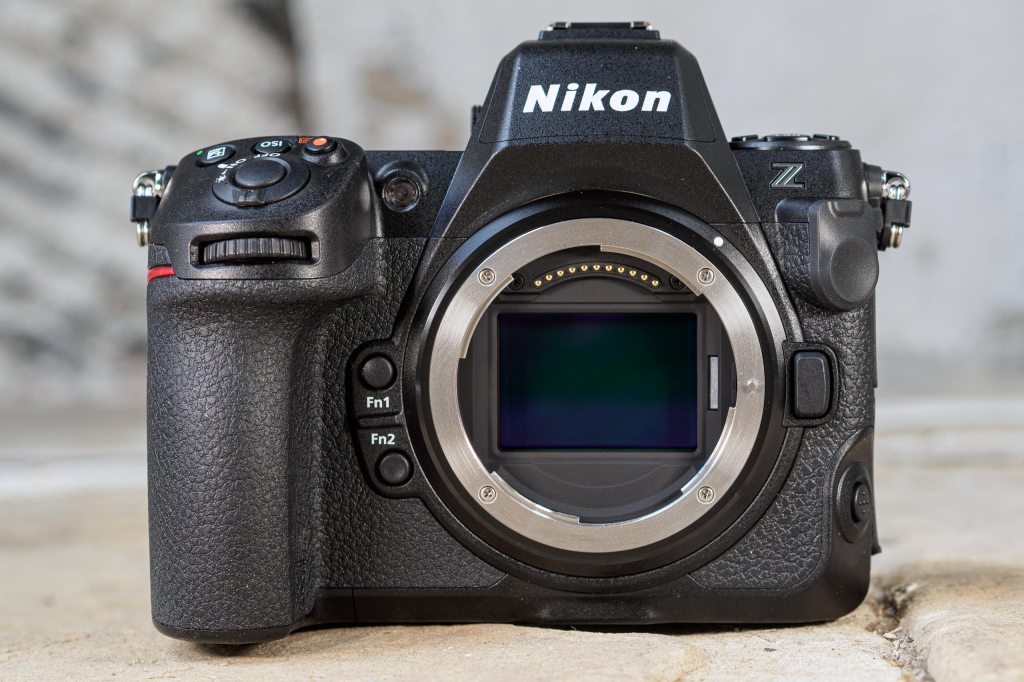
Amateur Photographer verdict
This pro-powerhouse will make mincemeat of pretty much any sports photography situation you could think of, with fast burst rates and frankly phenomenal subject-detection autofocus.- Brilliant, high-res image quality
- Remarkable shooting speeds
- Stunningly clever autofocus
- Pro-spec build and handling
- Pretty big and heavy
- On the expensive end of. thescale
At a glance:
- Mirrorless camera
- 45.7MP full-frame stacked CMOS sensor
- 20 fps full-resolution RAWs
- ISO 64-25,600 (standard)
- 8K 30p video
- $3,399 / £3,299 (body-only)
After Nikon won a ton of plaudits for its professional flagship sports camera, the Nikon Z9, it followed up with a slightly slimmed-down version bearing a somewhat more affordable price tag – the Nikon Z8. While it’s still an expensive proposition for most people, the Nikon Z8 is significantly less of an outlay, and still packs in a lot of what made the Z9 so brilliant for sports photography.
There’s that high-resolution 45.7MP sensor and the capacity to burst-shoot at up to 20fps in full-resolution RAW, while also recognising and tracking focus on specific subjects. The fastest shutter speed is an incredibly fleeting 1/32,000sec. It’s a beast for sports shooting, there’s no doubt.
So what’s missing? Well, the Z8 doesn’t have the Z9’s big beefy battery, so doesn’t have the same kind of longevity (though buying the optional battery grip can offset this somewhat). It also fields one CFexpress card slot and one SD slot, rather than two CFexpress slots as on the Z9. Of course, this isn’t necessarily a bad thing, since while SD cards are substantially slower, they are also substantially cheaper.
All in all, the Nikon Z8 is a brilliant sports camera for enthusiasts and professionals alike, bolstered by the superb range of Z-mount lenses available.
Best for: sports pros who need the fastest burst shooting.
Read our review of the Nikon Z8.
Best for pros
Best sports camera for pros: Sony A9 III
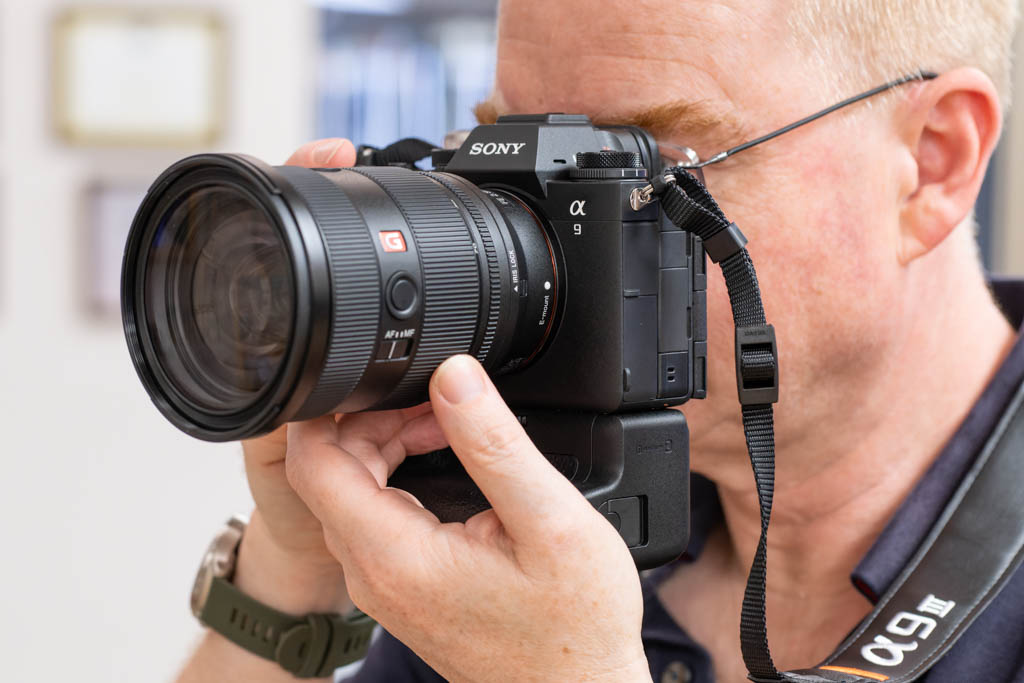
Amateur Photographer verdict
With groundbreaking global shutter technology, the Sony A9 III is a next-generation sports-shooting tool for professionals. It’s not cheap, but it is almost supernaturally capable.- Extraordinary autofocus and continuous shooting
- No rolling shutter distortion
- No banding under artificial light
- Flash sync available at any shutter speed
- Highly specialised for speed
- Over-complicated Sony menus
At a glance:
- Mirrorless camera
- 24.6MP full-frame stacked-CMOS sensor with global shutter
- 120fps continuous shooting
- ISO 250-25,600 (standard)
- 4K 120p video recording
- $5,998 / £6,099
A world’s first of the kind that Sony has made its business out of over the past decade or so, the Sony A9 III is the first full-frame camera with a global shutter sensor. This means it is capable of reading out every pixel on the sensor simultaneously, and what this means in real terms is that there’s no subject distortion due to rolling shutter, and no flickering or banding artefacts in artificial light. Flash sync is also available at all shutter speeds without needing to use high-speed sync mode.
Speed is the name of the game here. The Sony A9 III, even more so than the previous Sony A9 II, is a professional tool designed for working sports photographers who need 120fps silent shooting in full resolution RAW, with focus tracking and no viewfinder blackout. All this comes at a price of course, but that’s why it’s a professional camera.
The A9 III does suffer in some areas, with compromises having been made in terms of raw image quality in order to achieve its dizzying speeds. In dynamic range and high-ISO performance, it lags behind peers from the likes of Nikon and Panasonic. It’s a specialist tool rather than an all-rounder. You’ll also find there’s a wide range of E-Mount lenses available.
Best for: working sports press photographers.
Here is our in-depth review of the Sony Alpha A9 lll.
Best MFT for sports
Best Micro Four Thirds sports camera: OM System OM-1 Mark II

Amateur Photographer verdict
Lightning-fast and equipped with tons of clever features, the OM System OM-1 Mark II is a highly capable sports shooter. As long as the resolution isn’t too low for you, there’s a lot to recommend it.- Excellent subject-detection features
- Speedy shooting with improved buffer
- IP53 weather-sealed
- Only 20MP resolution
At a glance:
- Mirrorless camera
- 20MP Four Thirds Stacked BSI Live MOS sensor
- 50 fps with C-AF, 120 fps with AF locked
- ISO 80-102,400 (extended)
- 4K 60p video recording
- $1,900 / £2,049 body-only
A refining update to an already excellent camera, the OM System OM-1 Mark II exemplifies everything that’s great about the Micro Four Thirds system. It’s a truly impressive sports-shooting package, capable of tracking and capturing even the most fast-moving subjects, and with an extensively weatherproofed shell that makes it well-suited to outdoor sports.
Even with a little price bump over the original OM System ‘Olympus’ OM-1, this is still a truly impressive sports camera for the money. It can manage 120fps burst shooting with AF locked, putting it almost on par with the Nikon Z9, which costs more than double the price. Knock that rate down to a still-impressive 50fps and you get continuous autofocus, as well as blackout-free shooting. There are plenty of full-frame rivals that can’t put in that kind of shift.
There are loads of other features we highlighted in our glowing review of the camera as well, like the extensive weather sealing, the 1053-point autofocus system, and the clever Pro Capture mode that can capture up to 70 shots before you press the shutter release button. Granted, the smaller MFT sensor with 20MP resolution may simply not be enough for some users – if you can live with it, there’s a fine camera here, with a wide range of lenses available.
Best for: outdoor sports-shooting enthusiasts.
Best sports DSLR
Best sports DSLR: Canon EOS-1D X Mark III
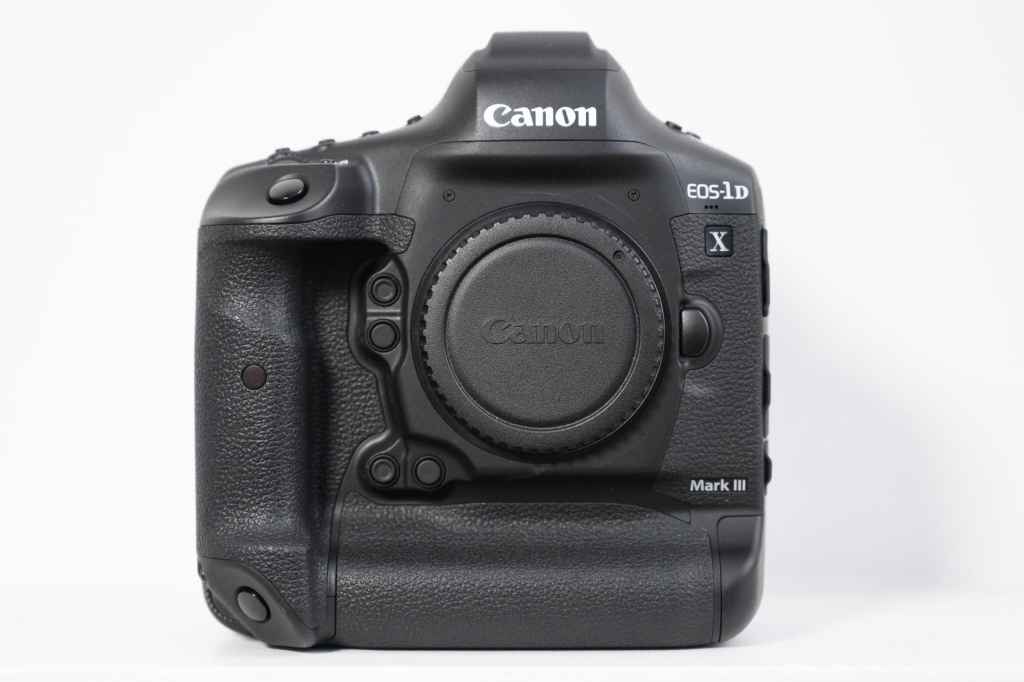
Amateur Photographer verdict
Sure, it’s a little outdated, but the EOS-1D X Mark III is still an incredibly capable sports camera, with an amazing range of lenses at its disposal.- Deep-learning autofocus
- Near-unlimited shot buffer
- Does very well at high ISOs
- Classic DSLR handling
- Big and heavy
- Won’t be receiving new lenses
At a glance:
- DSLR
- 20.1MP full-frame CMOS sensor
- 20 fps shooting
- ISO 50 – 819,200 (extended)
- 4K 60p video recording
- $6,499 / £6,999
Sure, it’s been pretty much superseded by the Canon EOS R3 – but we couldn’t resist including the Canon EOS-1D X Mark III, as it’s almost certainly set to go down in history as the last great sports DSLR. It’s an absolutely excellent camera for action shooting, with deep-learning autofocus that gets better as you use it, a lean 20fps burst speed, and an effectively unlimited shot buffer.
The immense pedigree of EF lenses means you’ll never be short of glass – though you may find that new ones are in short supply in years to come as Canon continues to divert its attention and resources to the EOS R system. Still, let’s not get carried away – you could shoot sports for the rest of your life on the EOS-1D X Mark III, and never feel as though you were getting a raw deal. It’s an incredible camera.
Best for: pros and serious enthusiasts who prefer DSLR ergonomics.
Best all-rounder
Best all-rounder sports camera: Sony A1
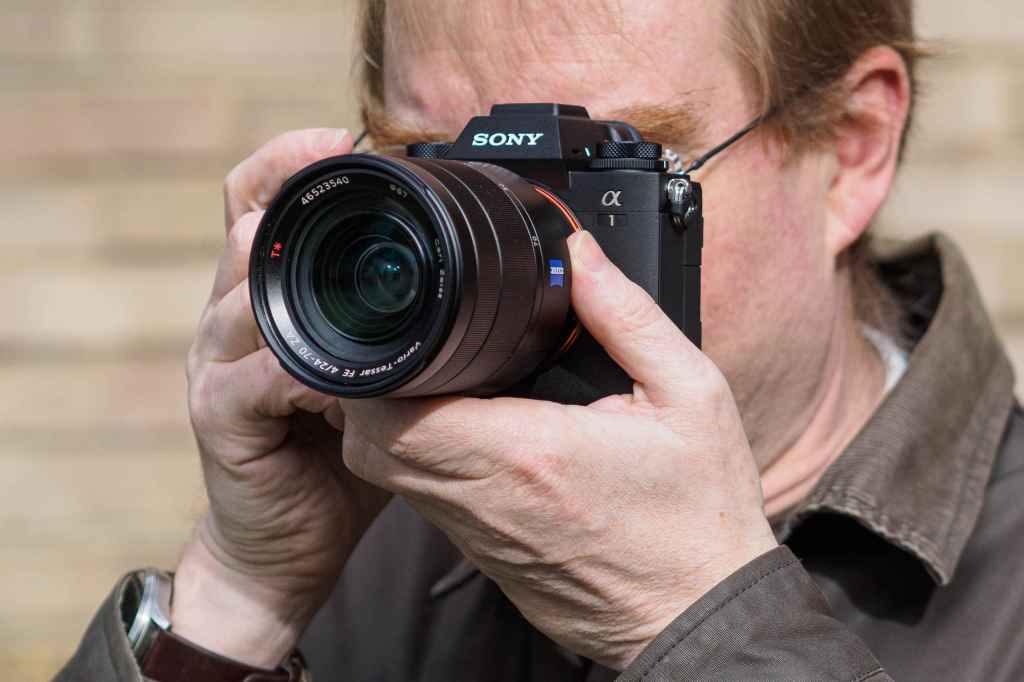
Amateur Photographer verdict
Sure, the price puts it out of contention for all but the top end of shooters. However, the Sony A1 is a do-it-all camera that’s as great for sports as it is for everything else.- Full-resolution 30fps burst with AF
- Exceptionally good viewfinder
- 8K video
- Incredibly expensive
- Hard to operate with gloves
At a glance:
- Mirrorless camera
- 51MP full-frame Exmor RS CMOS sensor
- 30 fps shooting
- ISO 50-102,400 (extended)
- 8K 30p video recording
- $4,999 / £4,999 body-only
The Sony A1 is a camera that proves you don’t have to choose between speed and resolution. If you’ve got the cash – and make no mistake, it’s a lot of cash – then the Sony A1 is the camera that will shoot incredibly detailed 50MP images at a rate of 30fps, with autofocus adjustments in between shots, somehow.
All this is backed by the at times preternatural-seeming autofocus system, which makes capturing fast-moving subjects a matter of near-trivial ease – in our review, we described it as “so easy that it feels like cheating”. There’s also the new sensor design that eliminates the image distortion problem that can affect electronic shutters. Plus, the E-mount lens range, which is still far and away the most extensive glass catalogue for a full-frame mirrorless system.
It’s difficult to think of a sports-shooting scenario in which the Sony A1 would not utterly excel.
Best for: everything.
Our review of the Sony Alpha A1.
Lead image: Andy Westlake, taken with the Sony A9 III.
Further reading:
- Best action camera to buy
- How to shoot action and sports
- Gerry Cranham on his legendary sports photography career
- Best drones with cameras






